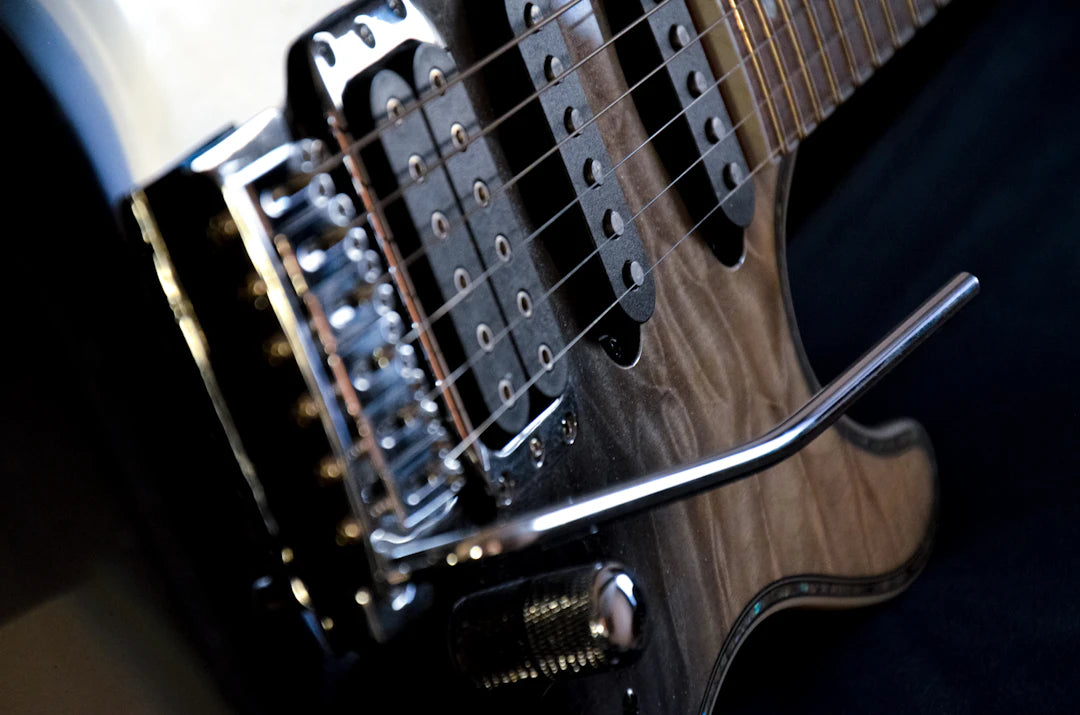Overview
This blog provides a comprehensive guide to understanding guitar pickups, common issues like low output levels, hum, loss of tone, and phase problems, along with their solutions. It also covers preventive measures to maintain pickups, different pickup types, and factors to consider for upgrades. By addressing these aspects, guitarists can enhance their instrument's performance and achieve better sound quality.
Frequently Asked Questions
1. What are guitar pickups and how do they work?
2. What are common issues with guitar pickups?
3. How can I fix low output levels in my guitar pickups?
4. What preventive measures can I take to maintain my guitar pickups?
5. When should I consult a professional for guitar pickup issues?
Investing in a quality guitar is one of the most rewarding experiences for any musician. However, even the best guitars come with their own set of challenges, especially concerning guitar pickups. Whether you have 1960 Stratocaster pickups or any OEM guitar pickups, understanding common issues and solutions can significantly enhance your guitar's performance and sound quality. This comprehensive guide aims to address these common problems and provide actionable solutions for every guitarist.
Understanding Guitar Pickups
Before diving into the common issues, it’s essential to understand what pickups are and their role in your guitar. Guitar pickups are electromagnetic devices that capture the vibrations of the strings and convert them into electrical signals. These signals are then sent to an amplifier, producing the sound you hear. The type of pickups, including classic models like 1960 Stratocaster pickups, can dramatically influence your tone.
Common Issues with Guitar Pickups
While pickups are designed to last, they are not immune to problems. Here are some common issues you might encounter and their respective solutions.
1. Low Output Levels
One of the most frequently experienced issues with guitar pickups is low output levels. If your guitar sounds weak or quieter than usual, it could be due to several factors.
- Damaged or Worn Out Picks: Over time, wear and tear can affect the efficiency of your pickups.
- Improper Height Adjustment: The distance between your pickups and strings may be too great or too close, affecting the output.
- Faulty Wiring: Loose or broken connections can result in a lack of signal.
Solutions:
To address low output levels:
- Check and replace any damaged or worn-out picks.
- Adjust the height of your pickups to achieve optimal string distance—generally, about 2-3mm when the fretboard is pressed down at the last fret.
- Examine the wiring for loose connections and, if necessary, re-solder any faulty joints.
2. Hum and Noise Issues
Unwanted hum or noise can be a significant issue, especially when performing live or recording. This noise could stem from several sources.
- Grounding Issues: Faulty grounding can lead to electric hum.
- Interference: Close proximity to electronic devices can introduce interference.
Solutions:
To eliminate hum and noise:
- Check your guitar's grounding and ensure it’s properly connected to the output jack.
- Avoid placing your guitar near devices that may cause interference, such as computers, amplifiers, or fluorescent lights.
3. Loss of Tone or Klank
If your guitar sounds dull or lacking in clarity, it could be due to aging components or poor-quality pickups. This can often be a concern with OEM guitar pickups that may not have the best sound quality compared to premium options.
Solutions:
To solve tone-related issues:
- Try cleaning your pickups to remove any dirt or grime, which might be affecting their performance.
- Consider upgrading to higher-quality pickups if you find that your current ones do not meet your tonal expectations.
4. Phase Issues
Combining multiple pickups (like in a Stratocaster) sometimes creates phase issues, resulting in a thin sound when two pickups are selected.
Solutions:
To fix phase issues:
- Experiment with the wiring. Reversing the wiring of one pickup may resolve the phase cancellation.
- Adjust how you're blending your pickups to find the optimal position that enhances tone rather than detracts from it.
5. Pickup Height Problems
Pickup height can significantly influence your sound. If set too high, pickups can produce a sharp, distorted sound. Conversely, if set too low, they can cause weak signal issues.
Solutions:
For optimum performance:
- Adjust your pickup height according to the string gauge you’re using.
- A good rule is to keep the pickup height about 1/8 inch from the strings for humbuckers and 1/16 inch for single-coils when fretted at the last fret.
When to Consult a Professional
Some issues can be quickly resolved at home, while others may warrant the attention of a professional. If you notice persistent problems even after trying these solutions, you might want to consult a technician who specializes in guitar repairs. A professional can assess the internal wiring, check the components, and provide insights that might not be apparent to the average guitarist.
Preventive Measures
Preventing problems is always better than diagnosing them after they've occurred. Here are some tips to help maintain the lifespan and functionality of your guitar pickups:
- Regular Cleaning: Regularly clean your guitar and pickups to avoid buildup of dust and grime.
- Proper Storage: Store your guitar in a cool, dry place, avoiding temperature fluctuations that can damage electrical components.
- Routine Checks: Periodically check the wiring and components within your guitar to catch potential issues before they become significant problems.
Understanding Pickup Types
Having a solid understanding of different types of pickups can help you make informed choices for upgrades or replacements if necessary. Here are some common pickup types you may encounter:
Single-Coil Pickups
Known for their bright and clear tonality, single-coil pickups are a staple in many rock and blues guitars, including the popular 1960 Stratocaster pickups. However, they are more prone to interference and noise issues.
Humbucker Pickups
These pickups use two coils to cancel out noise, resulting in a thicker, warmer sound—a favorite for rock and metal genres.
P90 Pickups
P90s offer a middle ground, combining characteristics of both single-coil and humbucker pickups. They are known for their punchy sound and versatility.
Incorporating Guitar Pickup Upgrades
It might come a time when your stock pickups just don't cut it. Experimenting with different pickups can breathe new life into your guitar. Whether you're upgrading from OEM guitar pickups to something more advanced or looking to replicate the sound of classic models like the 1960 Stratocaster pickups, this is a worthy investment for any player.
Deciding Factors for Upgrades
- Musical Style: Choose pickups that match your playing style. Blues players may favor single-coils for their clarity, while metal players may prefer humbuckers for their richness.
- Budget: While premium pickups are fantastic, several budget-friendly options still provide excellent quality without breaking the bank.
- Installation: Consider whether you will perform the installation yourself or if you’ll need a professional for the job, factoring in those costs as well.
Final Thoughts: Elevate Your Sound!
Your guitar pickups play a crucial role in shaping your sound, and by understanding common issues and their solutions, you can maintain and enhance your instrument's performance. Whether you're dealing with low output levels, hum issues, or considering a pickup upgrade, being proactive will lead you toward a cleaner and richer guitar tone. So don’t let common pickup issues hold you back; take charge, implement these solutions, and elevate your sound to new heights!
Linked Product
Odyssey Traditions 1960 Stratocaster Pickup Set
The Odyssey Traditions 1960 Stratocaster Pickup Set offers a vintage-inspired sound that can enhance the tonal quality of your guitar. Designed for easy installation, this pickup set provides clarity and warmth, making it suitable for a variety of music styles. Addressing common pickup issues, such as noise and lack of responsiveness, this set aims to improve overall performance and sound quality.
View Product










